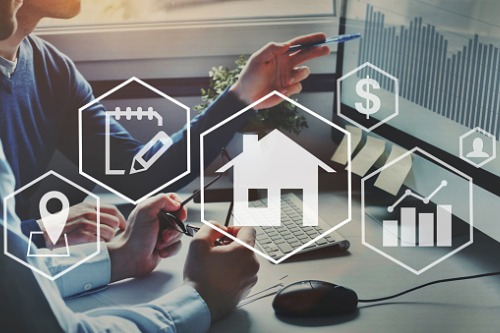The retail space is on the brink of a major change as commercial real estate executives try to predict how 5G will affect business

The retail industry has faced immense change over the last decade, as technology continues to disrupt the space. Technology is always implemented with the goal of improving the overall experience, whether a that’s for a retailer or the real estate owner/operator. Either way, the use of technology in traditional retail is becoming more and more critical.
Hailed as one of the next big innovations, 5G wireless technology is being recognized by the commercial real estate industry as a potential game changer. According to the 2020 CRE Innovations Report by Altus, 50% of commercial real estate executives believe that 5G will create major disruptive change.
“5G is enabling integration in a way we haven’t seen before where time matters and experience is critical,” said Scott Morey, executive director with Altus Group. “It’s creating an environment to further enable new and interesting experiences, but equally important mission critical activities.”
An example of this is taking the seamless approach of finding a size and style of a clothing item online and translating it into physical retail stores to make it just as easy to find what the customer is looking for in-person as if they were doing it online. Owner/operators and retailers are starting to band together to use property technology as a way to create transparency around traditional shopping and improve the customer experience.
The key attributes of 5G—which include high speed, reduced latency and lower energy consumption through battery powered potential—will play a huge role in this, according to the report by Altus. Efforts to minimize physical interaction and engagement has become more common for a number of retailers, in hopes of creating a smoother experience for consumers.
“The convenience of being able to order something, walk up and walk out has become more common but we are also seeing technology being used to reengage the consumer in the physical experience of retail.”
This includes introducing technology into dressing rooms, whether it’s to request a new size or item, or even looking at online reviews of the items that are currently being tried on. The blending of technology into the physical environment can already be seen with online retailers opening physical stores, which actually ends up being a driver of sales.
“When these brands open physical stores, not only do they make money in-store, but online sales also go up in that same trade area,” said Morey. The use of augmented reality supported by 5G is something that will even further integrate technology into traditional retail.
“Instead of having to open a box at a hardware store, consumers will be able to use their phone to look at the contents of the box. In grocery stores, a diabetic person might be able to use their phone to light up an aisle or highlight items that would be suitable for them.”
While some of this technology is already in use, others are still in the works. The challenge will come from providing the infrastructure and physical location points for 5G to reach its full potential, according to the report.
“If something takes too long or an automated system can’t keep up, it will either create long queues or the customer will give up, which defeats the purpose and diminishes the experience,” said Morey, adding that 5G is creating this platform for retailers to create experiences of value to the end consumer.
The report states that 5G technology will enable innovation in industries such as healthcare, transportation and manufacturing, as well as in the future development of smart cities.



